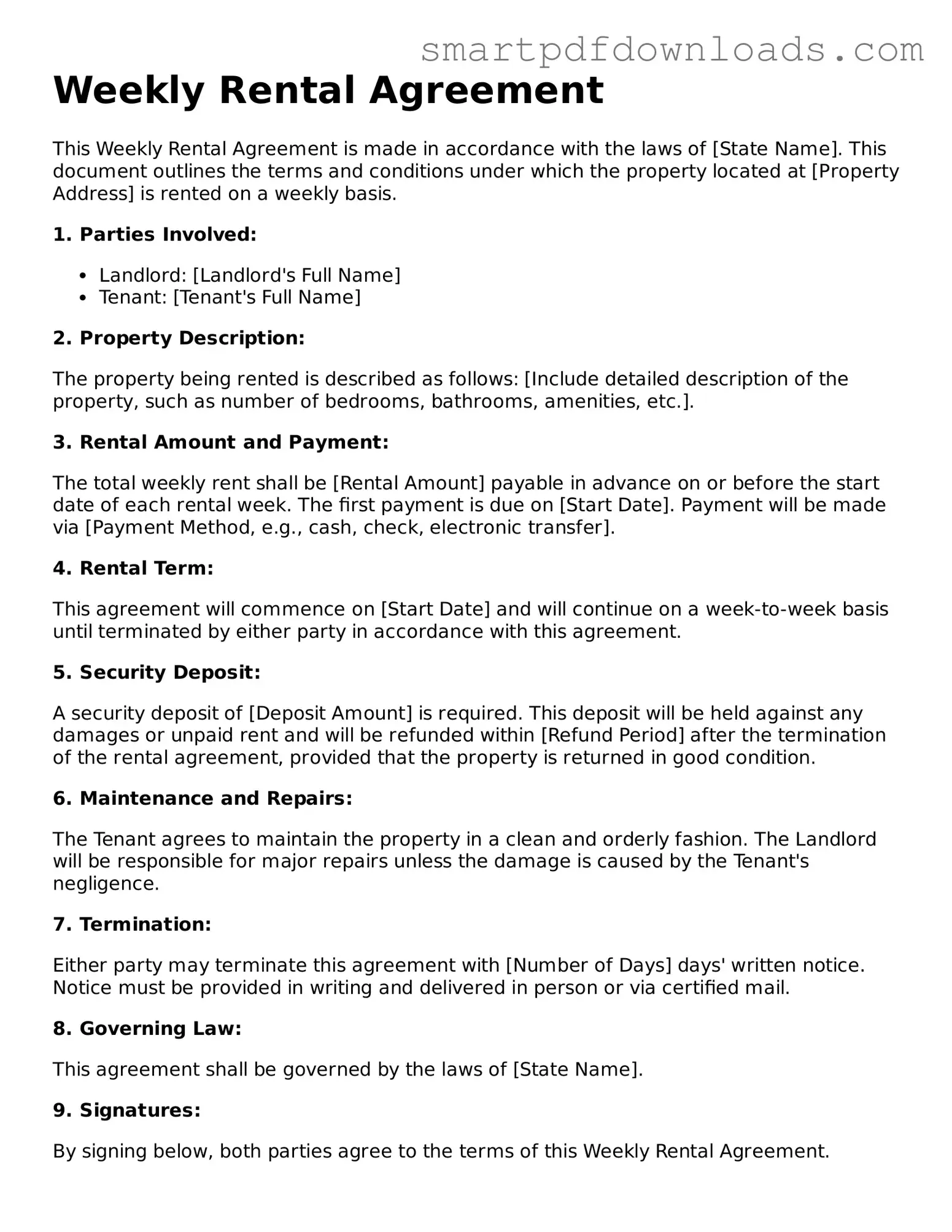Weekly Rental Agreement
This Weekly Rental Agreement is made in accordance with the laws of [State Name]. This document outlines the terms and conditions under which the property located at [Property Address] is rented on a weekly basis.
1. Parties Involved:
- Landlord: [Landlord's Full Name]
- Tenant: [Tenant's Full Name]
2. Property Description:
The property being rented is described as follows: [Include detailed description of the property, such as number of bedrooms, bathrooms, amenities, etc.].
3. Rental Amount and Payment:
The total weekly rent shall be [Rental Amount] payable in advance on or before the start date of each rental week. The first payment is due on [Start Date]. Payment will be made via [Payment Method, e.g., cash, check, electronic transfer].
4. Rental Term:
This agreement will commence on [Start Date] and will continue on a week-to-week basis until terminated by either party in accordance with this agreement.
5. Security Deposit:
A security deposit of [Deposit Amount] is required. This deposit will be held against any damages or unpaid rent and will be refunded within [Refund Period] after the termination of the rental agreement, provided that the property is returned in good condition.
6. Maintenance and Repairs:
The Tenant agrees to maintain the property in a clean and orderly fashion. The Landlord will be responsible for major repairs unless the damage is caused by the Tenant's negligence.
7. Termination:
Either party may terminate this agreement with [Number of Days] days' written notice. Notice must be provided in writing and delivered in person or via certified mail.
8. Governing Law:
This agreement shall be governed by the laws of [State Name].
9. Signatures:
By signing below, both parties agree to the terms of this Weekly Rental Agreement.
______________________________
Landlord Signature
Date: _____________
______________________________
Tenant Signature
Date: _____________
